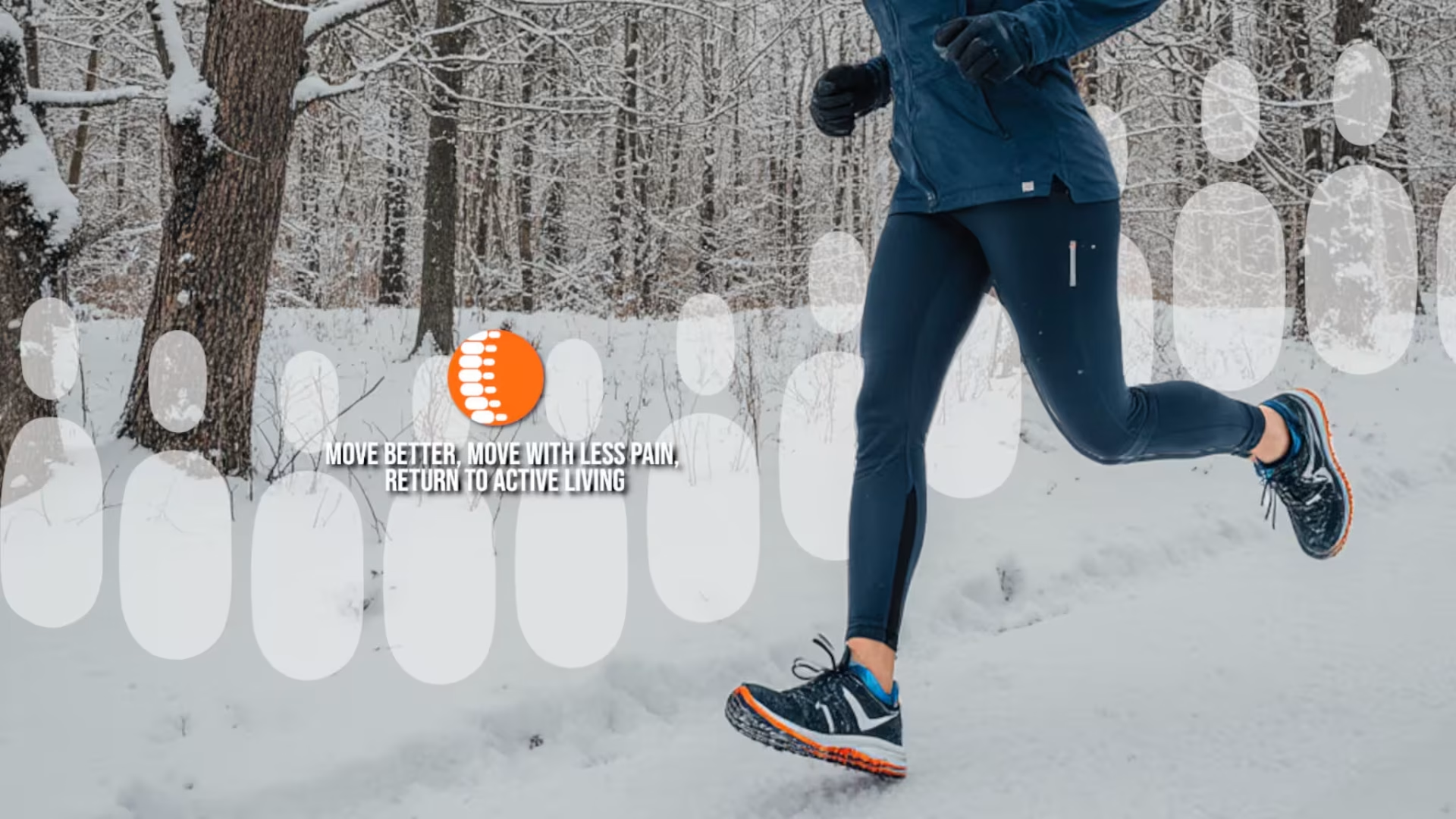Manitoba runners don’t stop when winter hits. But snow, ice, and sub-zero temperatures change how your body moves and increase winter running injuries due to the risk of slips, falls, and cold-related muscle strain. Even experienced runners can lose traction, overreach, or feel stiff muscles after a frosty run. Understanding how winter affects your body, and adjusting for it, can help you stay strong, mobile, and injury-free all season.

Winter Running Injury Risks
Research shows that cold-weather conditions significantly increase the likelihood of slips and falls. In Sweden, for example, nearly one in ten registered fractures were caused by slipping on ice or snow (Rydberg et al., 2024). While most runners don’t fracture bones, these same conditions can cause smaller, repetitive strains. Uneven snowpack and hidden ice can shift how your foot strikes the ground, placing extra load on the knees, hips, and lower back.
Slips don’t need to be dramatic to have consequences. Even minor loss of balance can alter your gait for days, creating subtle asymmetries that compound over time. These micro-compensations often show up as hip tightness, hamstring irritation, or low back stiffness—especially when you keep logging winter miles without recovery work.
How Cold Affects Your Muscles and Joints
Cold exposure reduces muscle elasticity and joint range of motion, which can make tissues more prone to microtrauma. Laboratory studies show that cooling muscles increases tendon stiffness and reduces tissue strain capacity. For example, when knee tendons were cooled, stiffness rose (Kubo et al., 2017). Similarly, chilled calf muscles became significantly stiffer and less extensible (Hirata et al., 2017).
Combine this with slippery surfaces, and the risk for sudden, awkward landings increases. Studies of walking on icy surfaces show altered muscle activation patterns, especially in the quadriceps and tibialis anterior, as the body tries to maintain balance (Marigold & Patla, 2008). These neuromuscular changes may protect against falls but also raise the chance of localized overuse and soft-tissue strain.
Smart Strategies for Safer Winter Runs
1. Warm up before heading out. Start indoors to raise tissue temperature and joint mobility. Dynamic movements like leg swings, walking lunges, or gentle hip circles activate stabilizers that protect against slips.
2. Choose traction and terrain carefully. Stick to packed trails, plowed paths, or gravel shoulders. Avoid polished ice or uneven snow. Footwear with deeper tread or traction aids like microspikes improves grip and reduces slip risk (Laflamme et al., 2021).
3. Adjust your stride and cadence. Long strides increase braking forces and slipping risk. Research suggests shortening your stride by about 10 percent and keeping cadence slightly higher—around 170–180 steps per minute—can improve control and lower joint load (Willy et al., 2022; Figueiredo et al., 2025).
4. Keep your arms active for balance. Run with bent elbows and relaxed shoulders. Let your arms swing naturally from the shoulders to help maintain your center of gravity on uneven ground.
Restoring Balance After a Slip or Strain
Winter running challenges more than endurance—it tests your balance, joint control, and recovery strategies. If you notice persistent stiffness in your hips, lower back, or legs after running on snow or ice, that’s a sign your body is compensating. At my clinic, I help runners restore mobility, rebalance stride mechanics, and recover from slips or falls using a combination of joint manipulation, soft tissue therapy, and targeted exercise. The goal is simple reduce your winter running injuries by keeping you running strong, stable, and confident through Manitoba’s longest season.